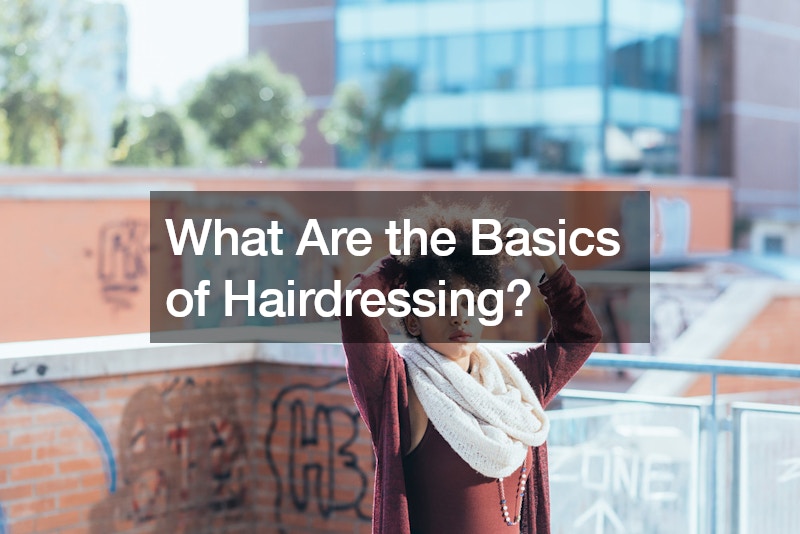
Hairdressing is both an art and a science, involving a variety of techniques, tools, and knowledge areas that professionals use to style, cut, color, and treat hair. Whether you’re considering a career in hairdressing or simply want to understand more about this creative profession, here’s an in-depth look at the basics of hairdressing.
Understanding Hair
The foundation of hairdressing begins with understanding the different types and textures of hair. Hair can be straight, wavy, curly, or kinky, with a range of densities and porosities.
These characteristics determine how hair reacts to products and treatments, and dictate the appropriate techniques to be used for cutting, styling, and caring for the hair.
Hair Anatomy
Hair is primarily made up of keratin, a protein that also makes up nails and skin. Understanding hair’s structure—from the inner medulla, through the cortex, to the outer cuticle—helps in choosing the right treatments and products that enhance hair’s health and appearance.
Hair Cutting Techniques
Cutting hair is a fundamental skill for hairdressers, involving various techniques to achieve different styles:
Straight cuts involve cutting hair at a 0-degree angle, resulting in a blunt and uniform length.
Layered cuts use angles ranging from 45 to 180 degrees to create movement and volume in the hair.
Texturizing removes bulk from the hair, adds volume, or creates a specific shape without changing the overall length.
Each technique requires a different set of tools, primarily shears, razors, and clippers, and the choice of tool can affect the final look of the haircut.
Coloring Techniques
Hair coloring is another essential aspect of hairdressing. Hairdressers must understand color theory and the chemistry behind hair dyes to safely and effectively apply colors that enhance the client’s appearance. Key coloring techniques include:
Single-process coloring involves applying a single shade to the entire head, which is great for covering grays or changing the base color.
Highlights/lowlights add dimension by lightening or darkening strands of hair.
Balayage is a freehand technique where color is swept onto sections of hair, resulting in a natural, sun-kissed look.
Safety is paramount in coloring, as the chemicals can be harsh. Hairdressers need to conduct patch tests and consider previous color treatments to avoid damaging the hair.
Styling Techniques
Styling is the creative part of hairdressing where hairdressers can truly showcase their artistic skills. Styling techniques vary widely and can include:
Blow-drying to achieve smooth, voluminous, or sleek looks.
Updos for special events, such as weddings or proms, where hair is artistically arranged.
Braiding which involves weaving hair in different patterns to create intricate designs.
The choice of styling products, such as mousses, gels, and sprays, is critical in achieving the desired final look and ensuring that the style holds throughout the day.
Hair and Scalp Treatments
Understanding and treating the scalp and hair health is crucial for hairdressers. They need to be knowledgeable about various scalp conditions and hair problems, such as dandruff, psoriasis, or hair loss, and be able to offer or recommend appropriate treatments or products.
Salon Management
Beyond cutting, coloring, and styling hair, hairdressing also involves salon management skills, especially for those who run their own businesses. This includes understanding business operations, customer service, safety regulations, and hygiene practices. Effective communication and interpersonal skills are also essential as they enhance client satisfaction and loyalty.
Continuous Learning
The world of hairdressing is always evolving, with new trends, products, and technologies emerging. Professionals must continue learning and adapting to stay current. This might involve attending workshops, taking new courses, or participating in industry events.
.


